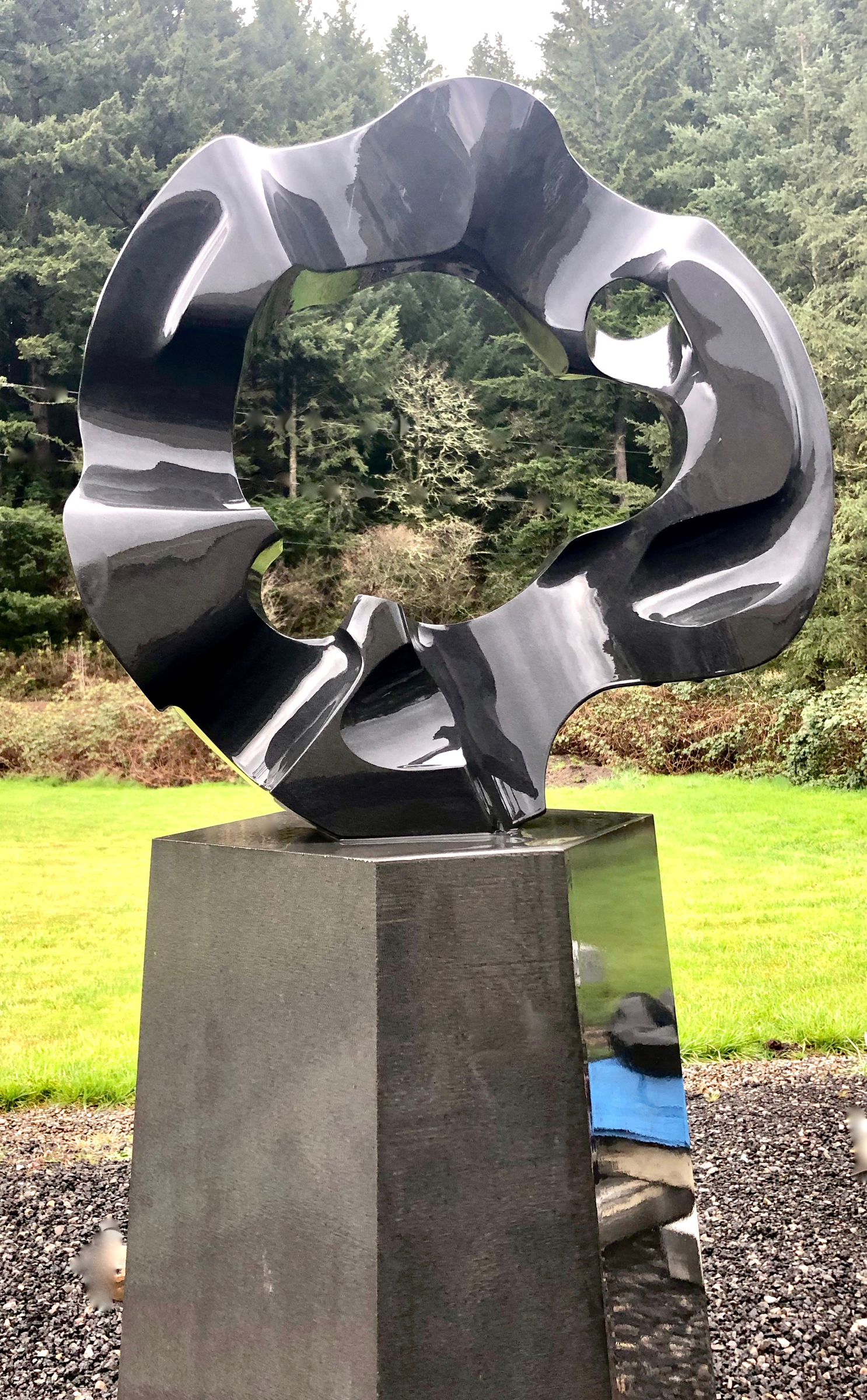
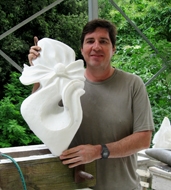
SN: How would you describe yourself?
JT: An adventurer of creative ideas; a ‘horizon chaser’ exploring the planet; a sensory junkie always seeking out interesting flavors, colors, shapes, fragrances and sounds.
SN: And was it all this exploration that made you want to be an artist?
JT: I’m not sure about using the term ‘artist’, because for me art is about the adventure of new ideas more than encapsulating hidden meanings or sharing emotions. I’m more comfortable thinking of myself as a designer of ideas.
SN: Why is this important to you?
JT: It allows me the opportunity to create beautiful things that have an independent life of their own. I like to think I’m creating future adventures for other people who will “hopefully” wonder someday (perhaps, given the toughness of my stones, thousands of years from now) who made this and why.
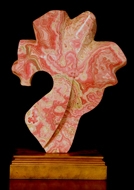
SN: What life experiences affected your direction in art?
JT: Raised in Houston, I found little outlet for my desire for physical quests, so the only adventure for me was in discovering novel ideas. I’ve never had an interest in sports and academics was more of a means to an end, so by 18, I had played with a wide variety of arts and crafts including lapidary work. I won some awards and people liked what I did, but I wanted to create without financial considerations, so I decided to first get a career going so I wouldn’t be forced to make art that I didn’t like but that did match someone’s couch.
SN: How does your art reflect your philosophy?
JT: I’m always looking to add some beauty to this life that is so often filled with coarseness or tragedies. My sculptures are sort of a search for perfection that doesn’t exist in our flawed reality.
SN: How has NWSSA influenced your work as an artist?
JT: Beyond the multitude of mechanical techniques I’ve learned over the years, the sense that I was not alone in trying to create something was very important. I treasure the support I received from so many real artists.
SN: Describe your art in your own terms – focusing on your stone carving.
JT: When I’m at my best, I try to capture to exquisite power of natural beauty. Most people carve plants as decorations to a larger sculpture or, as pretty, delicate creations but I wanted to capture their tremendous power that always holds me in awe.
SN: Is it representational and/or non- representational?
JT: Clearly, my preference is to explore the representational, but interpretive view. To me, there is no exhilaration in copying a form directly. What makes a design interesting for me is capturing an element or elements of nature and creating something innovative from it.
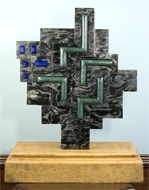
SN: How do you get your ideas?
JT: I am an avid gardener and collector of rare plants. I also travel several months a year and log 1,000’s of photos of various gardens, historical art and just interesting forms from around the world. Sometimes, though, I just take all the pieces of leftover clay and work with them until I see a pattern. My success in life has been largely due to my ability to recognize abstract patterns whether in math, finance or clay.
SN: How do you develop them (by direct carving, drawing, modeling, etc)?
JT: I first make little notes and quick drawings. I can then visualize ideas in my mind and rotate, change and evaluate before I make final clay models of them. I now have an evolving catalog of hundreds of clay models and whenever I make a new one, I take my worst one and destroy it so as to slowly move the overall average quality of my models to a higher level.
SN: How and why did you decide to start having carvings made in China?
JT: I did the math and calculated that if I worked at sculpting full time, I would be 84 before I finished carving the semi-precious stones I already owned. I had been to Italy many times, and I was carving in Italy again this summer, but given the prices, the Italian experience is now just a romantic indulgence for me.
In 2002, I started by doing an internet search, contacting a Chinese company that said they would work with me. I can now produce sculptures in China at a small fraction of the price in Italy and the quality is so good that even many Italians now just import their sculptures from China to sell as their own. And, with the current exchange rates, for the amount of money I spend going to Italy for a few weeks, I can produce many finished sculptures in China – and in polished jade, not marble.
Even after five years, I really enjoy all the adventure of going to China, reveling in new sensory experiences and the excitement of mixing my ideas with talented, traditionally trained carvers.
SN: What stones do you prefer?
JT: As an adventurer, I prefer to use really hard, exotic stones like thulite, zoisite, lapis, jades, quartzes or rhodochrosite that have a fascinating story. Rarity helps, but there are some great stones that require an exciting quest to find them in large sizes and decent quality or one-of-a-kind stones that just have a very interesting personal history of their own. I enjoy carving marbles for fun.
SN: What tools do you use?
JT: When I carve, I use just about every tool there is from Foredoms, hand tools, water tools, air tools to a 16” chop saw – but as Elaine will occasionally remind me, none of them properly or well.
SN: Where do you exhibit your work?
JT: I’ve just enjoyed my little sculpting adventure myself, but occasionally, I’ve thrown in a piece for a show and in January and February, I’m a featured artist at the Edmunds Art Gallery.
SN: How much work do you complete in a year?
JT: My goal is to make about ten to fifteen pieces of ‘great’ (to me) sculpture.
SN: How is your work area set up?
JT: I have a workshop in the bottom story of my house and an outdoor area set up for more dust and water.
SN: What have been your satisfactions in your life as an artist?
JT: Finally feeling like I have a strong ‘voice’ or style. For years I muddled around in many different styles, but now I feel like I know what I want to say and how to say it.
SN: What obstacles and challenges have you overcome?
JT: My major challenge is time. I still occasionally work part time, have two great kids that keep me busy, a garden that always requires attention and I also try to travel several months every year to explore my other varied interests.
SN: What are you looking forward to (goals, commissions, new ideas, flights of fancy)?
JT: I would like to travel around the world and collect historically important stones to carve. For instance, I have mapped out the ancient quarries in Egypt and I would love to go there someday to collect the stones used by the Pharaohs. Finally, I just want to say thanks for all the support and patience everyone has given me over the years.

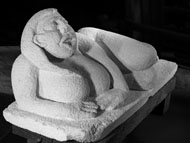
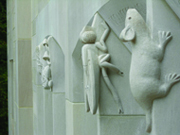

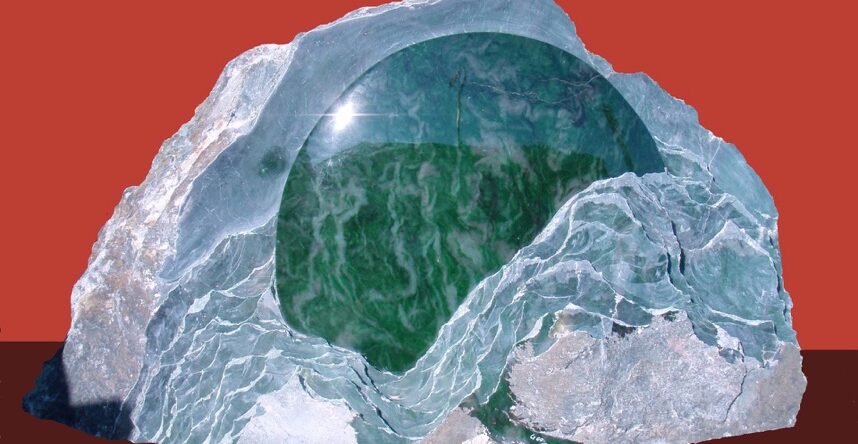
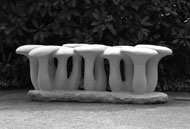
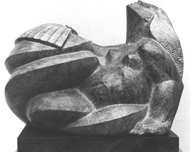


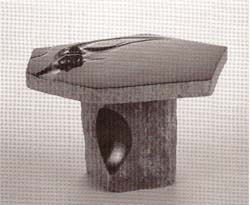

We need some kind of descriptive text here.